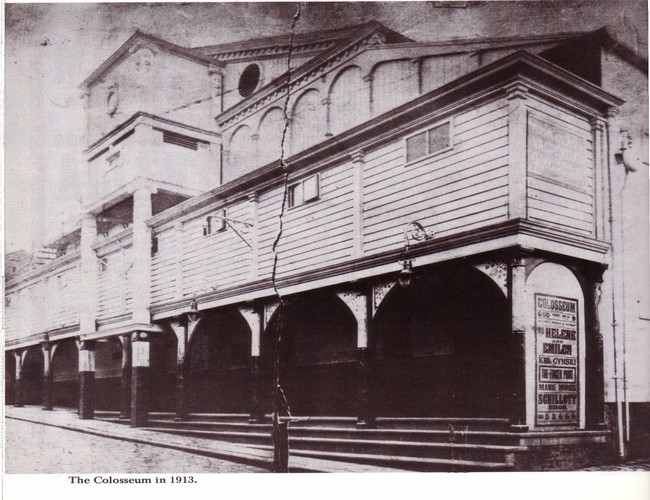It is one of the oldest theatres still remaining in the country and dates back to 1885.
David Rustridge was the House Manager of Oldham Coliseum from 1982 until 2016 but had been coming to the theatre since the 1950’s.

About Manchester spoke to him about his interest in the theatre and discovered a fascinating story:
The Theatre’s origins go back to 1885 and a local businessman in Oldham by the name of Thomas Whittaker, given the job by another businessman Mr Myers of the building and who when going to collect his money, found that his patron could no longer pay.Thus Thomas inherited the job of running the theatre which opened in June 1885 on Henshaw Street known as the time as Myers Grand Circus.
The town of Oldham at the time was a thriving cotton spinning town, a mining town and an engineering town. Photos of the time show rows of terrace housing for the workforce and at the time, Oldham Edge had over fifty mines.
Before the invention of radio, theatre was the only entertainment in the town but it had much competition.Whittaker would put on circuses, touring shows and groups of players.
Not long after its opening the theatre was forced to move, the council wanting the land for what would become the Tommyfield Market.There are accounts of the theatre being literally taken down piece by piece and reassembled where it currently stands, also the site of a coal mine, the Hole Bottom Colliery.
It reopened as the Colisseum, spelt with two S’s The Roman way on Jubillee Day 1887 to much fanfare.Whittaker would continue to run it for a couple more years before it was taken over by the Yates family who would be associated with the wine lodge business.
David shows me a poster of the time, illustrating the various entertainment of the time, “How girls are brought to ruin” is one title, while there is a production of Othello, which was showcased twice a night. As moving pictures started to happen, the Collosseum would bring in its own version. Including film of Oldham Athletic practicing before a game.
Before the First World War, the theatre had established itself as the place for entertainment, it is said that Charlie Chaplin played its boards, it put on panto, Stan Laurel played in one, there was Opera, and there were melodrama, in front of audiences of around 2,000.
We have an account of one of the acts at the theatre, Samson, the world’s strongest man, bending steel bars and breaking steel chains after they had been inspected by the audience, also lifting heavy weights using his teeth and lying on his back, a small swing was placed on his chest with four adults sat in the seats, his act finishing with him lying on the stage and a small car passing over his body.
But even in 1907, it seems the theatre was struggling to bring people in, one wag saying that you wouldn’t get people in even if they were putting on the Crucifixion with the originally cast.
As the cotton town of Oldham began to decline so did the theatre as people simply no longer had the money to afford the price of a seat.It closed in 1933.Oldham, said one councillor at the time “was broke.”
It was the end of the first phase of the theatre’s life but it would rise from the ashes, saved by Repatory Theatre, a band of touring actors popular in the town, who needed somewhere to play. At the back of the Collesseum was a Temperance Hall, built in 1852, opened at the Oldham Rep Theatre in 1938, a theatre club with its own rules and regulations where the public flocked to see the plays, so successful that they had to find new premises.

They had an ideal spot just across the road and so the Collosseum which had been empty for over five years and so in July 1939, it would reopen as the Oldham Rep, altering the spelling of Colliseum to the spelling we now know and so the theatre was reborn. We will tell that story in the second part of the article.







